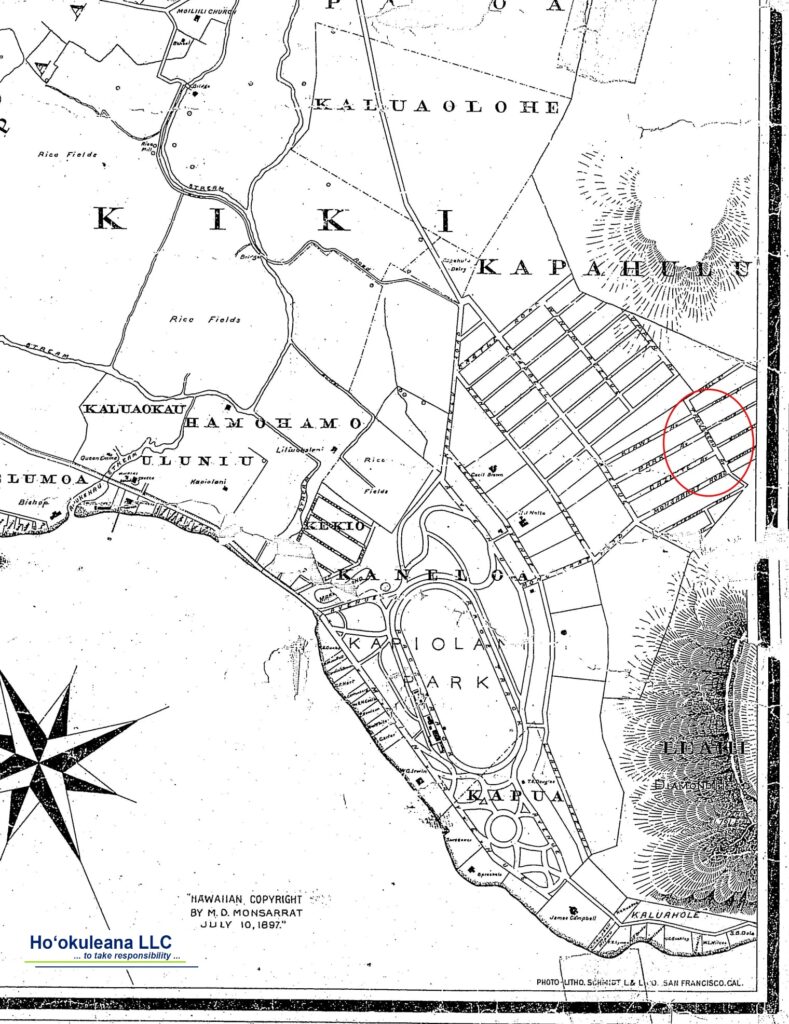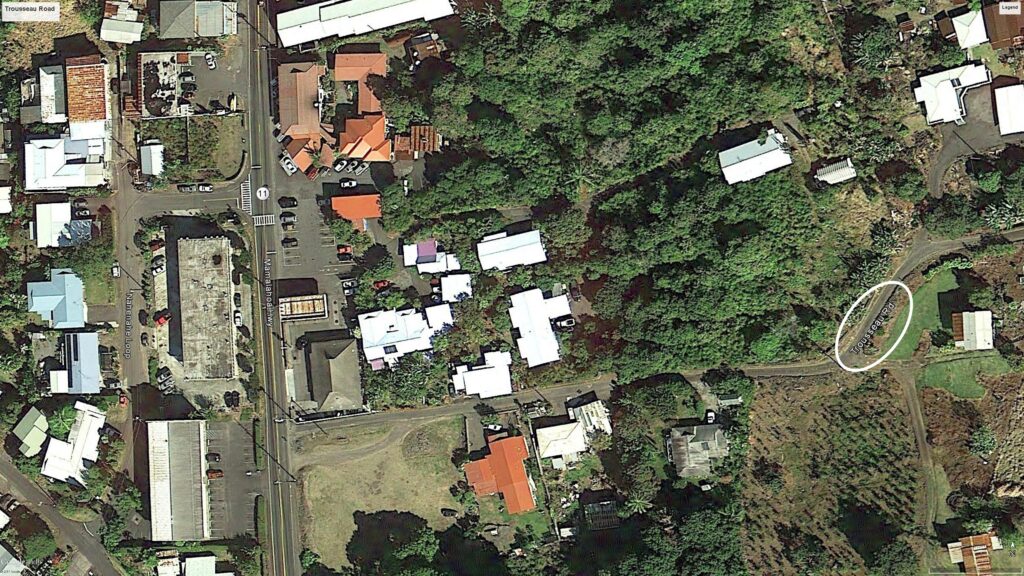Kamilo Beach (milo tree; the twisting (of ocean currents) (Pukui)) on the Kaʻū coast of the Big Island of Hawaiʻi expectedly has a stand of milo trees. But that is not the only wood here.
Two places here were called Ka-milo-pae-aliʻi (Ka-milo landing (of) chiefs) and Ka-milo-pae-kānaka (Ka-milo landing (of) commoners.) Drowned commoners washed in at the latter, chiefs at the former.
Kaʻū people traveling to Puna cast lei tied with loincloths and pandanus clusters into the sea at Puna; when the lei drifted back to Ka-milo, the Kaʻū people knew that the travelers had reached Puna. (Pukui)
Native Hawaiians, seeking wood for dugout canoes, used to go to Kamilo Beach at the southernmost tip of the Big Island to collect enormous logs that had drifted from the Pacific Northwest. (LATimes)
True to its name, ocean currents, actually two currents – one coming up from South Point and the other coming down from Cape Kumukahi – combined with fierce onshore winds to make this rocky stretch of shoreline the final resting place for plenty of natural debris – it was known as a magnet for driftwood.
However “the strangest thing about Kamilo is that it’s covered with plastic trash — things that we use every day. I find shoes, combs, laundry baskets, Styrofoam, toothbrushes and countless water bottles.”
“There are even toys like LEGO blocks and a little green army man. Beneath the recognizable things are millions of tiny, colorful plastic pieces — the fragments of broken-down larger objects. They look like confetti.” (Marinez, ScienceNews)
This plastic sand is coming from all around the Pacific rim, swirling into a vortex which eventually brings it to these shores. This is the place where Hawaiians came to find bodies of people who were lost at sea. Nowadays, this beach is where we come to find what our throw-away society has done to the environment. (HawaiiNewswNow)
Algalita Research Foundation founder Charles Moore estimates that more than 90% of the trash on Hawai‘i beaches is not generated in the Islands. Kamilo Beach on the Big Island, gets the worst of the debris influx, with trash over a foot deep in some areas. (HonoluluMagazine)
“Our exploration brought us no answers but inspired more questions and speculations. We confirmed that some debris on Kamilo Beach has travelled in the Pacific subtropical gyre from far away East Asia and from the North American West Coast.” (Maximenko, IPRC)
“The current meters tell us that the waves and the tides provide the energy, pushing the debris to shore like a broom. The rather long shore break may contribute to debris accumulation.”
“But, we still need to understand the interaction between large-scale currents collecting debris from the entire North Pacific and the coastal dynamics that move the debris over the reef.” (Maximenko, IPRC)
Finds range from everyday items like shampoo bottles, combs and toothbrushes; fishing industry items like buoys, hagfish eel traps and glowsticks; mariculture leftovers like oyster spaces; children’s items like army toys; and a remarkable number of unidentifiable bits and pieces, broken fragments and resin pellets (aka “nurdles.”)
Some of the more interesting debris items include a full-size refrigerator with Japanese kanji, a military box with Soviet Union tags, and a select few glass floats made in Norway, Korea or Japan. (NPS)
Some debris is generated in Hawaiʻi. But much of the debris comes to Kamilo from much farther away. One piece of plastic had Japanese writing. Ropes were sprinkled with a species of barnacle found commonly in the Pacific Northwest. (CivilBeat)
Volunteers regularly pickup and dispose of the trash. Of the over 130-tons taken out, glass gets recycled, plastic garbage ends up in the landfill and old fishing nets are barged to Oʻahu, where they’re burned in H-POWER to provide some of Honolulu’s electricity. For every truckload of garbage that comes out, more comes in from the ocean. (Gilmartin, Hawaiʻi Wildlife Fund (HWF))
HWF co-founder Bill Gilmartin and colleagues estimate that approximately 15 – 20 tons of debris wash ashore here annually. About every other month, HWF coordinates a community-based cleanup effort at the “dirtiest” section of this coastline.
On average, they bag and remove about 3,600 lbs. of marine debris in a single day’s effort. By weight, about 62% (199,600 lbs.) of the total debris removed has been derelict fishing net bundles. (NPS)
The debris from the North Pacific Garbage Patch occasionally escapes and the model shows it floats towards the Hawaiian Islands, making windward shores of the islands trashcans for marine debris.
Kamilo Beach near South Point on the Big Island is arguably the most famous beach for the enormous amount of marine debris sweeping up on it. A BBC video labeled it as “The Dirtiest Beach in the World.” (iprc)
Lessons can be learned from HWF’s experience, and have been. Volunteers now see the relationship between beach litter and our own daily reliance on single-use, throw-away plastics.
Imagine if we each made a commitment to reduce the amount of single-use plastics we personally consume and dispose of on a daily basis; this would make a difference to the marine ecosystem. (NPS)



























































